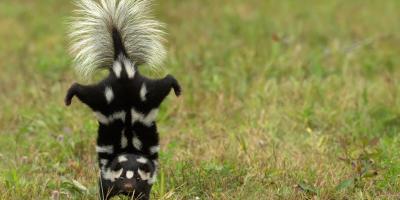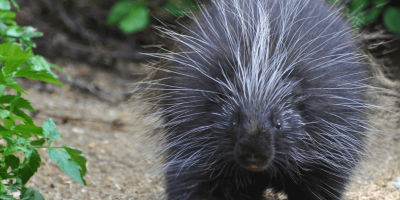More Than Just Spring Chickens

April marks the start of spring, and with nature’s cyclical period of growth also comes the birth of young racoons, skunks, and many other wildlife species across New England. Gray squirrels, for instance, produce new litters March through May, and nursing mothers become much more active during this time as they search for food for both themselves and their kits. The presence of squirrel activity inside the home may be marked by commotion in the wall and ceiling voids during dawn and dusk hours for this reason, as the mother is likely to spend most of the daytime hours “at home” with her young, often in the attic space or wall voids.
Spring also marks the return of several local bat species. Given that they are food source-driven, bats become active in New England as soon as insects do, meaning bat activity becomes dramatically higher during this time of year as they emerge from their winter hibernation areas. For the little brown bat species, this includes returning from hibernaculum colonies in other areas of New England to the previous year’s summer roosting sites. These areas may include your home’s soffits, chimney flashing and roof system. On the other hand, the more common species, the big brown bat, is more prone to remain in attic spaces throughout their winter hibernation. They will then begin to take flight again in the spring, hunting for nutritional insects in preparation for their own upcoming birthing season.
By May, female bats in maternal colonies will be starting to give birth to their young, which are born without the ability to fly. By June, the young bats will begin to grow and put on weight in preparation for their first emergence in August. JP Pest Services relies on a non-lethal eviction process to rid the home of bat colonies. Our exclusion services for these maternal colonies will be put on hold during this time until the young bats are weaned and can fly on their own to be properly and safely evicted from the structure. While we avoid sealing entry points between the months of May and August, our Wildlife team is still completely able to inspect, identify, and assist with scheduling an eviction service year-round.
%20(1).jpg)
While most birds are naturally more inclined to nest in safe spaces and away from areas with regular human foot traffic, there are some species that are actually attracted to these areas, usually to take advantage of the food and seed we inadvertently leave behind for them. For this reason, they’ll often nest in areas that are not only unsightly, but actually harmful to human health due to their unsanitary nesting practices and loose latrine etiquette. Furthermore; starlings, sparrows, and even the occasional robin may seek nesting sites in vulnerable structure voids such as dryer vents and open roof lines, putting your home in unnecessary risk.
A homeowner may not just notice a spike in wildlife activity in the treetops and attic; ground-dwelling mammals such as raccoons and skunks may also be spotted with new litters throughout April and May. Raccoons may even take advantage of structure gaps such as crawlspaces, chimneys and attic spaces to raise their young, while skunks become especially active seeking denning sites at ground level, often under porches, decks and sheds.
Servicing the rural settings of New England reminds us that wildlife is a permanent fixture in our own existence. While we all should promote healthy coexistence whenever possible, wild animals taking up residence in your home poses many health and safety risks. The trained professionals at JP Pest Services are at the ready to assist with humane eviction when needed, ensuring wildlife exists only where it should – in the wild! Whatever the pest or wild nuisance, JP Pest Services has you covered.
Wildlife wandering a little too close to home? Schedule a free inspection and take $50 off your service.



